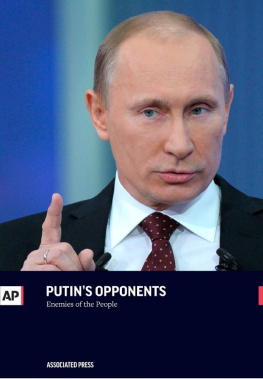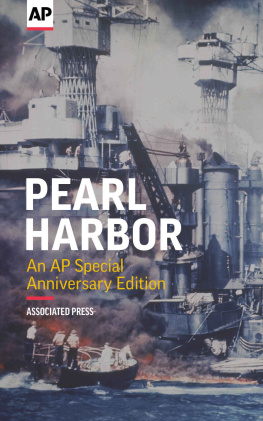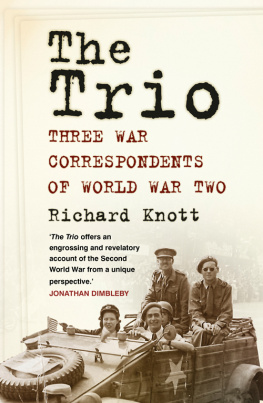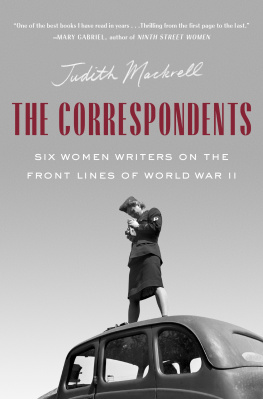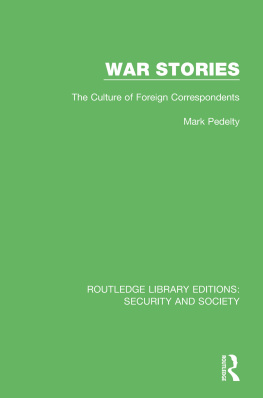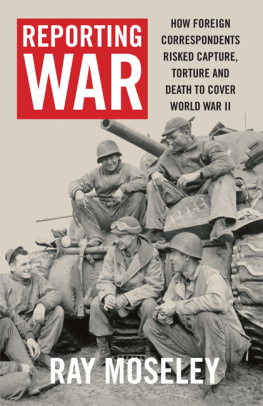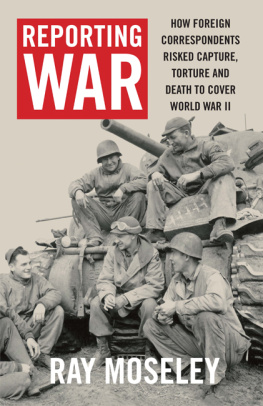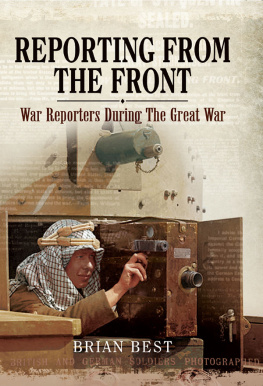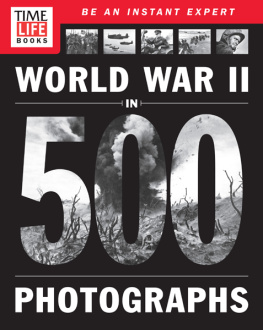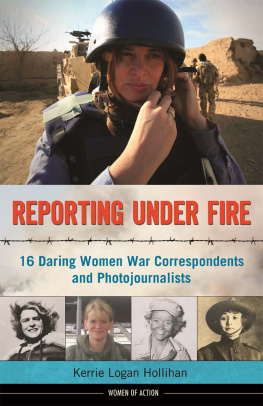
World War II: Unforgettable Stories and Photos by Correspondents of the Associated Press
Copyright 1945 by The Associated Press
All rights reserved. No part of this book may be used or reproduced in any form or by any electronic or mechanical means, including information storage and retrieval systems, without permission in writing from the publisher, except by a reviewer who may quote brief passages in a review.
Electronic edition published 2015 by RosettaBooks
Cover design by Brehanna Ramirez
ISBN e-Pub edition: 9780795346064
www.RosettaBooks.com
FOREWORD
These reminiscences by 30 of the APs top World War II correspondents, written when they were fresh off the battlefields of Europe and the Pacific, capture an era of combat news reporting as practiced by masters of the craft.
By republishing World War II as an e-book, The Associated Press today recovers those memories and opens a window to a past world. The writers portray the mood in Danzig on the eve of the first shots, and follow the course of the war right through to the discovery of the concentration camps in Germany, and the jubilation felt by American witnesses to the Japanese surrender on the broad deck of the USS Missouri in Tokyo Bay.
A straight-backed little man in civilian clothes asked the night clerk to call him at 4 a.m., wrote AP correspondent Lynn Heinzerling just before the Nazi blitzkrieg into Poland. I knew he was a German army officer and it was obvious he wasnt rising at that hour to advance the cause of peace.
To see the wasted corpses of ten thousand women stacked like cordwood, table-high over a space as big as a football fieldthat was staggering enough for any normal human being. It became suddenly and appallingly worse when, out of the mass, details began to emerge, and the pitiful and wretched dead began to reclaim their lost identity as people, recounted correspondent William Frye of his visit to Bergen-Belsen concentration camp.
Since this book was compiled 70 years ago at the request of AP Executive Director Kent Cooper, historians have written mountains about the worlds greatest and most terrifying conflict.
But few pack the immediacy or embody the spirit of the times as this one thin volume, illuminated by the work of frontline photographers like Joe Rosenthal, Frank Filan and William C. Allen.
Years hence when the historians can begin to appraise World War II more fully, they are certain to lean heavily on the graphic day-to-day accounts, books and recollections of the correspondents, wrote Cooper in 1945.
I couldnt agree more. The memories are vivid and immediate again. It is, indeed, reporting to remember.
John Daniszewski
Vice President for International News
April 2015

If the war is worth fighting at all, it deserves proper news coverage. And the only way to assure that is for a war reporter to crawl up there in his own sweat and get the story. No velvet delusions about warfare exist among the troops. They want to know the truth. To write the news as they want it told seems to me the highest function of the battlefront reporter.

Veteran AP correspondent of Atlantic and Pacific theaters, at Cassino front.
THE WORLD GOES TO WAR AT 4 A.M.

By Lynn Heinzerling
It came rolling up from the harbor like the rumble of doom, this German gunfire, nudging the gabled houses of Danzig lightly, setting the Hotel Deutsches Haus to trembling and waking the pigeons roosting on the austere Marienkiache.
It was Sept. 1, 1939, and this was the first shooting of the war. Men began to die here as Hitler stepped out on the road to ruin.
It had been clear in Danzig that it was coming. Barbed wire had been sprouting all around the Free City for days. A pontoon bridge had been put in place across the Vistula and solemnly dedicated in a public festivity. Field telephone wires were strung from Danzig into headquarters out in the rural areas and thousands of families had evacuated their homes.
The Danziger Vorposten had said mysteriously the Sunday before: The day is near, very near.
The night before it happened, the manager of the Deutsches Haus had sent a bottle of machandel and a bottle of scotch up to my room.
The bar will be closed for a while, he said, and I think you should have this.
The manager didnt say any more, but he smiled knowingly. He had been a prisoner of war in England during the last war and he didnt believe everything he read in the German papers about the British and the rosy prospects for Greater Danzig in the Greater German Reich. The same night a straight-backed little man in civilian clothes asked the night clerk to call him at 4 a.m. I knew he was a German army officer and it was obvious he wasnt rising at that hour to advance the cause of peace.
After the first volley, the narrow streets of Danzig were quiet and empty as I ran out of the hotel. The first person to appear was a fat fellow in a brown Storm Troopers uniform, who was plastering walls with placards announcing the return of Danzig to the German Reich. He obviously was much impressed by the shooting he was hearing, and his important role in the proceedings.
In a cafe nearby, apparently open for the early morning trade, the Berlin radio was pouring out a chilling program of dirge-like music. I dropped in, hoping to hear some official word of the crime which had just been committed. The cafe owner listened to the clear American accent and grabbing me by the shoulder, pushed me out.
We dont want any foreigners in here today, he said, slamming the door.
The streets were beginning to fill now. Gauleiter Albert Forster, the money-mad Nazi who had been sent to Danzig by Hitler to do the preliminary dirty work, sped by in a low-slung, open car with motorcycle escort.
Down at the harbor the German training cruiser, Schleswig Holstein, which had dropped anchor a week before on a training cruise, was playing its part in the treachery. The training had ended now and the cruiser was pouring shell after shell at point blank range into the Westerplatte, the Polish munitions dump on a spit of land in the harbor. The sides of the white, old cruiser were growing blacker and blacker. German ground troops were rounding up Poles and taking over Polish installations in the (League of Nations) Free City.
Then came the unexpected, the wondrous thing about Danzig. There were only 202 Poles on Westerplatte. But one of them was a thin-faced, bony Major named Henryk Sucharski, who was ready and eager to fight the Schleswig Holstein with her four 11-inch guns, ten 6-inch guns and other assorted weapons, and a German land force with unlimited artillery and manpower.
Major Sucharski, commander of the garrison, had 165 rifles, 38 revolvers and pistols, 60 heavy machineguns, 23 light machineguns, four mortars, two anti-tank guns, and a 3-inch field piece which should have been in the Warsaw Museum. But Sucharski had 201 men who thought just about as he did and were anxious to get the most out of the guns at hand.
Next page


